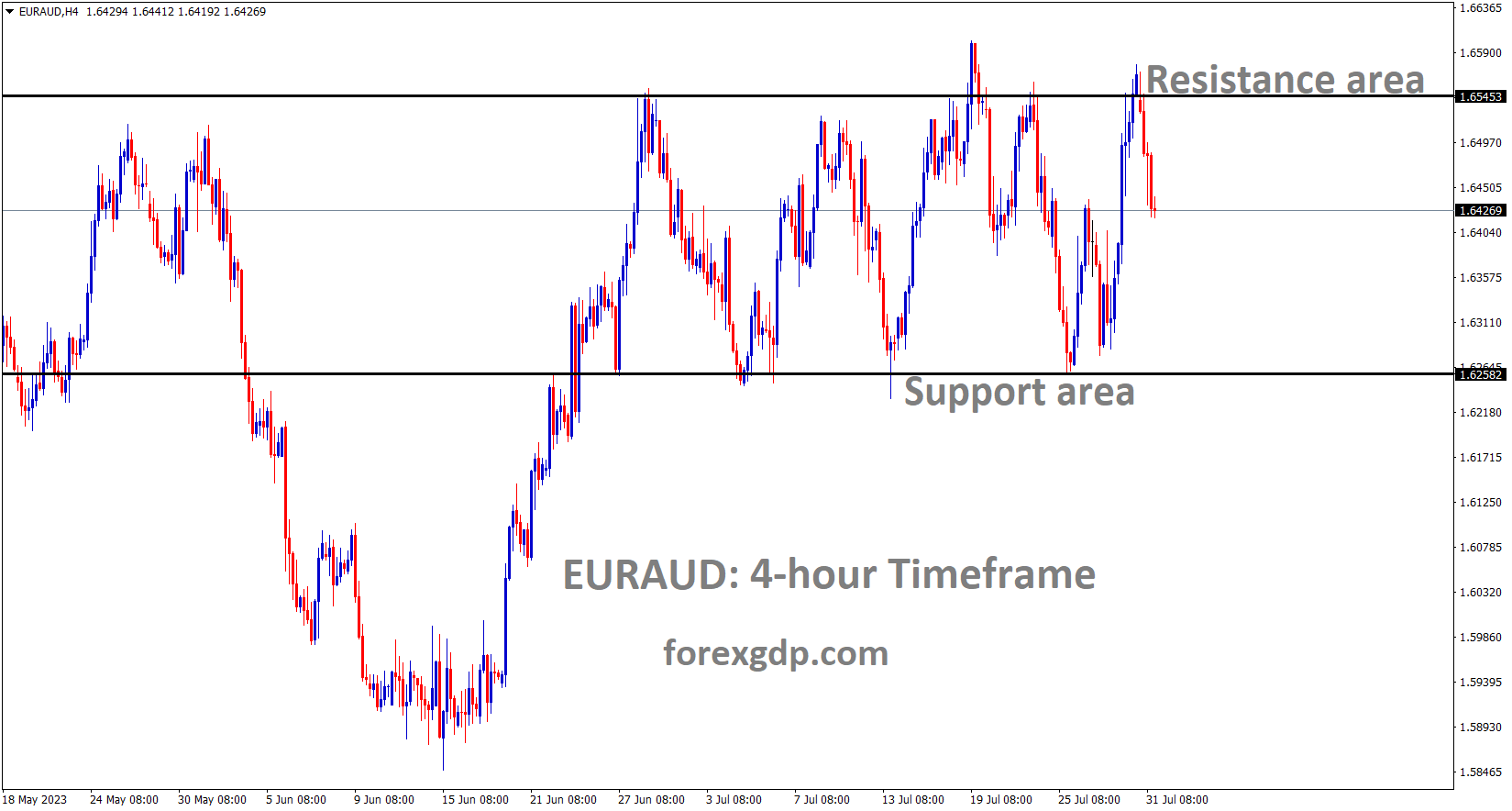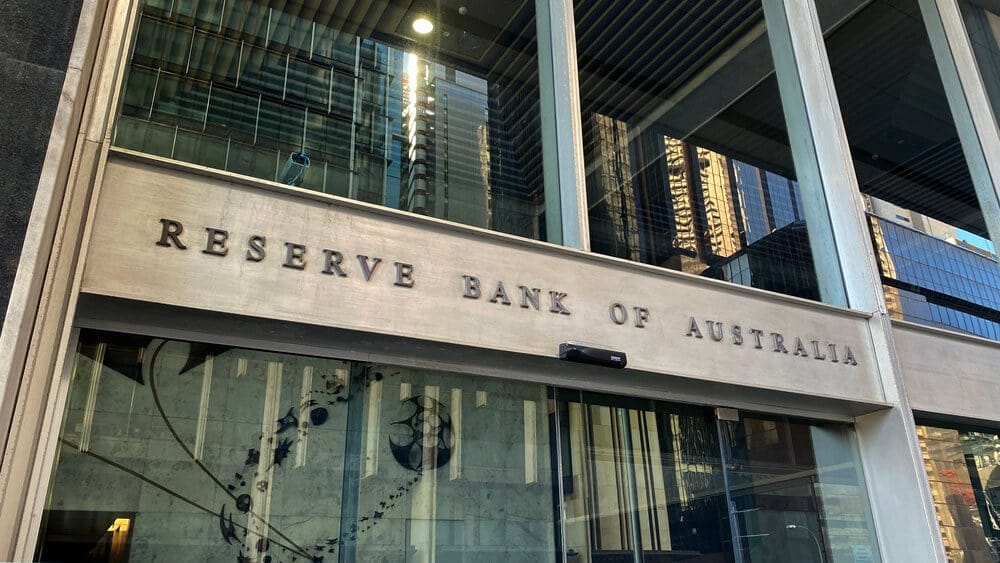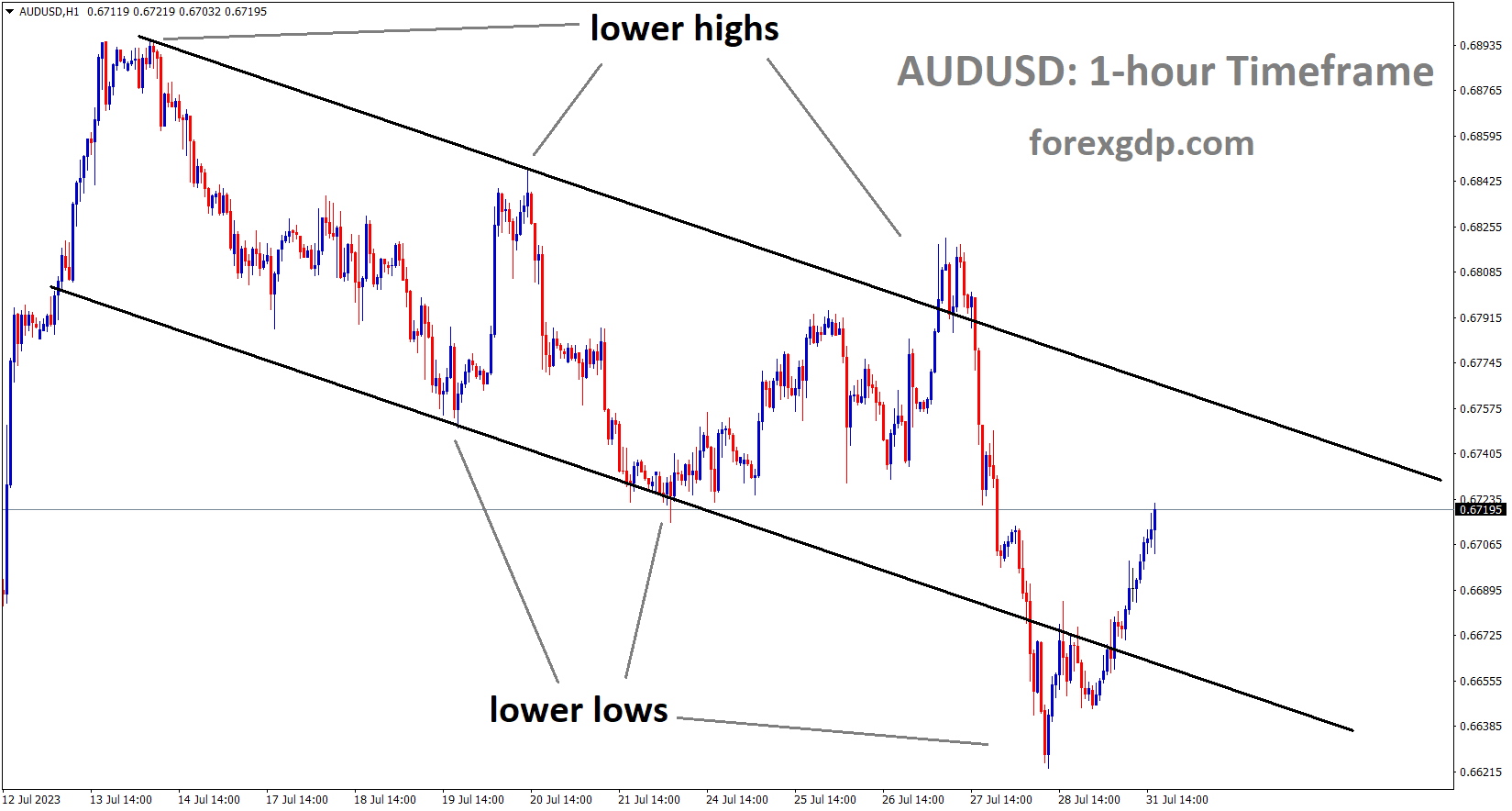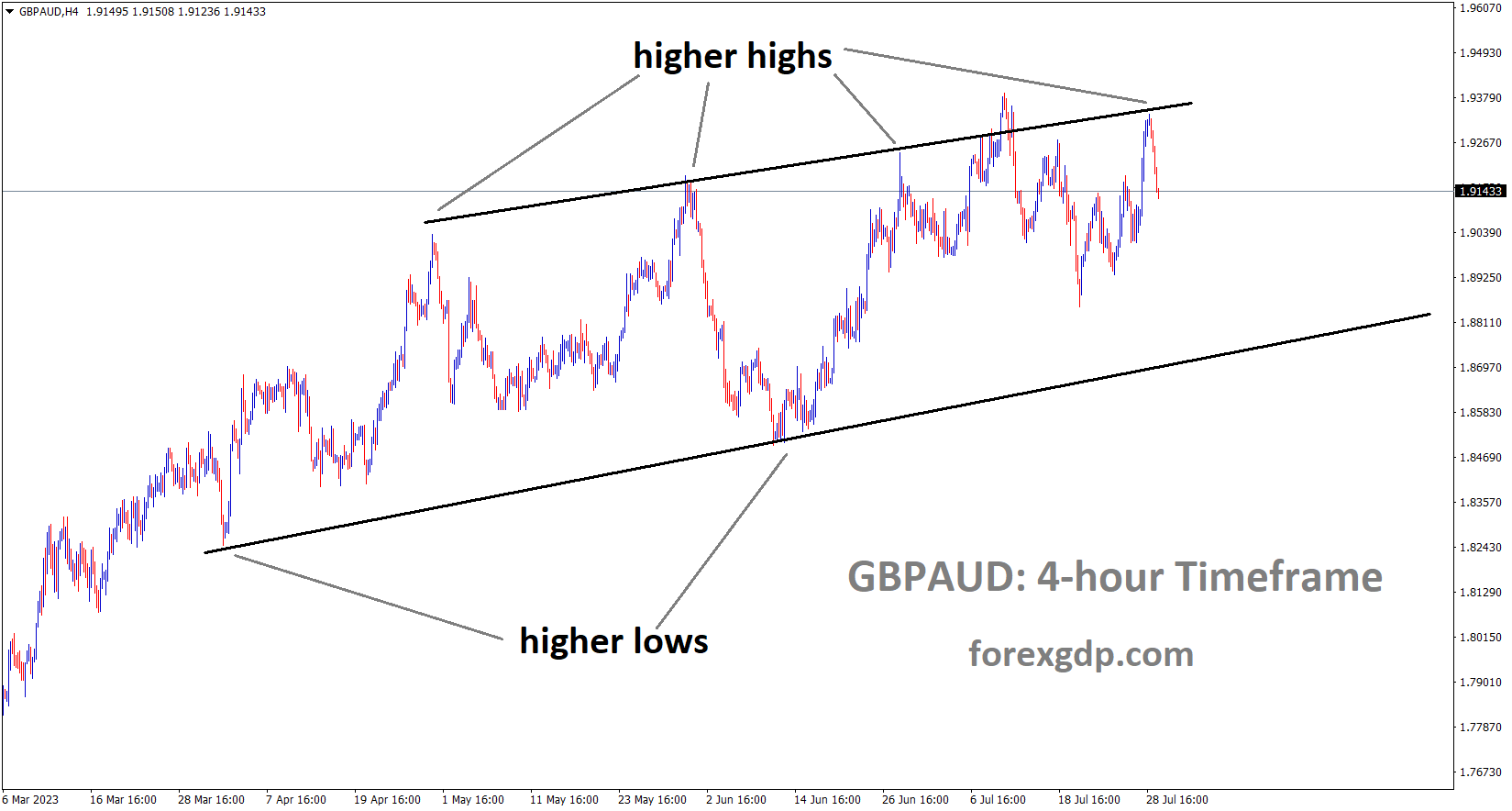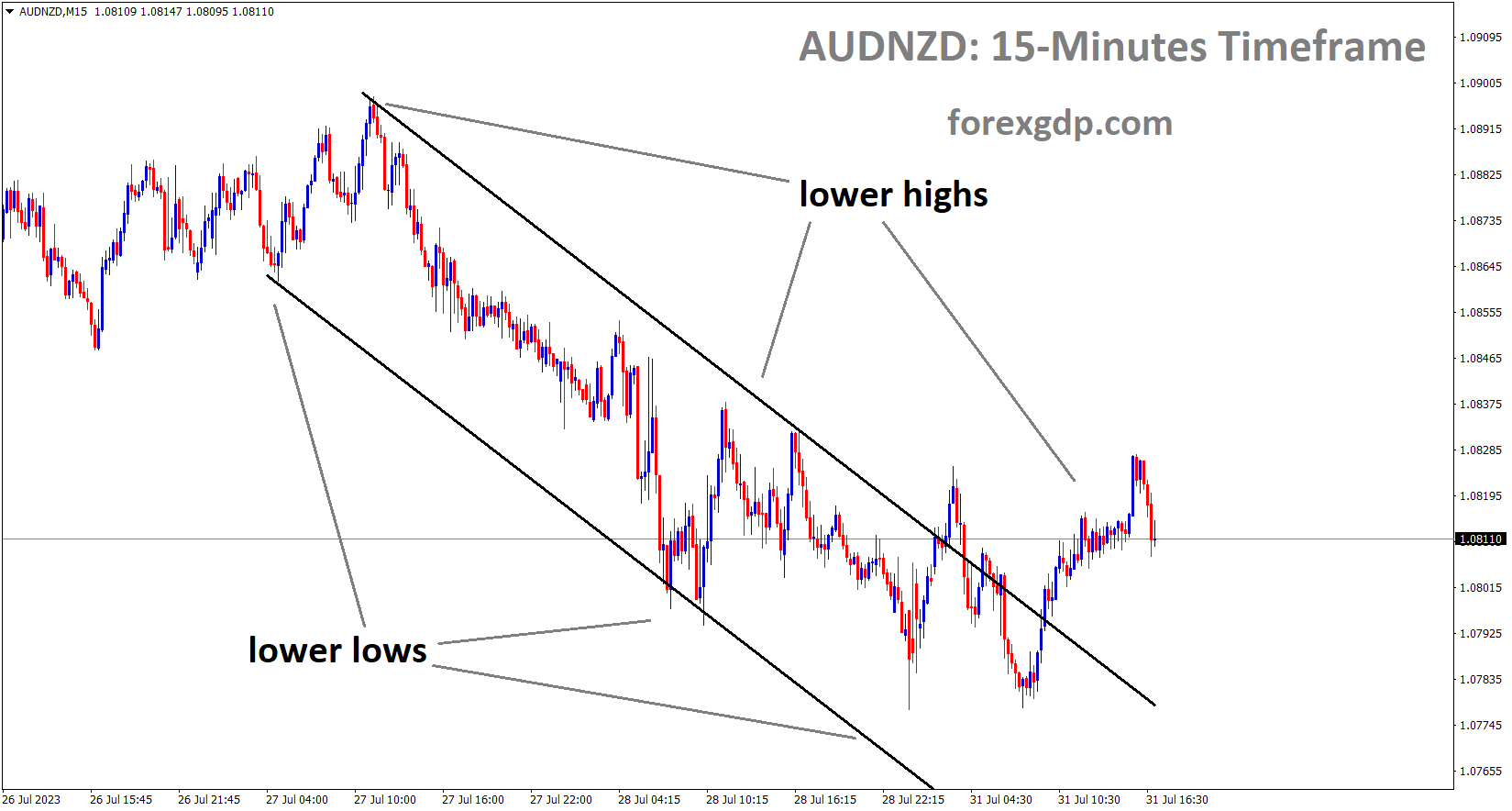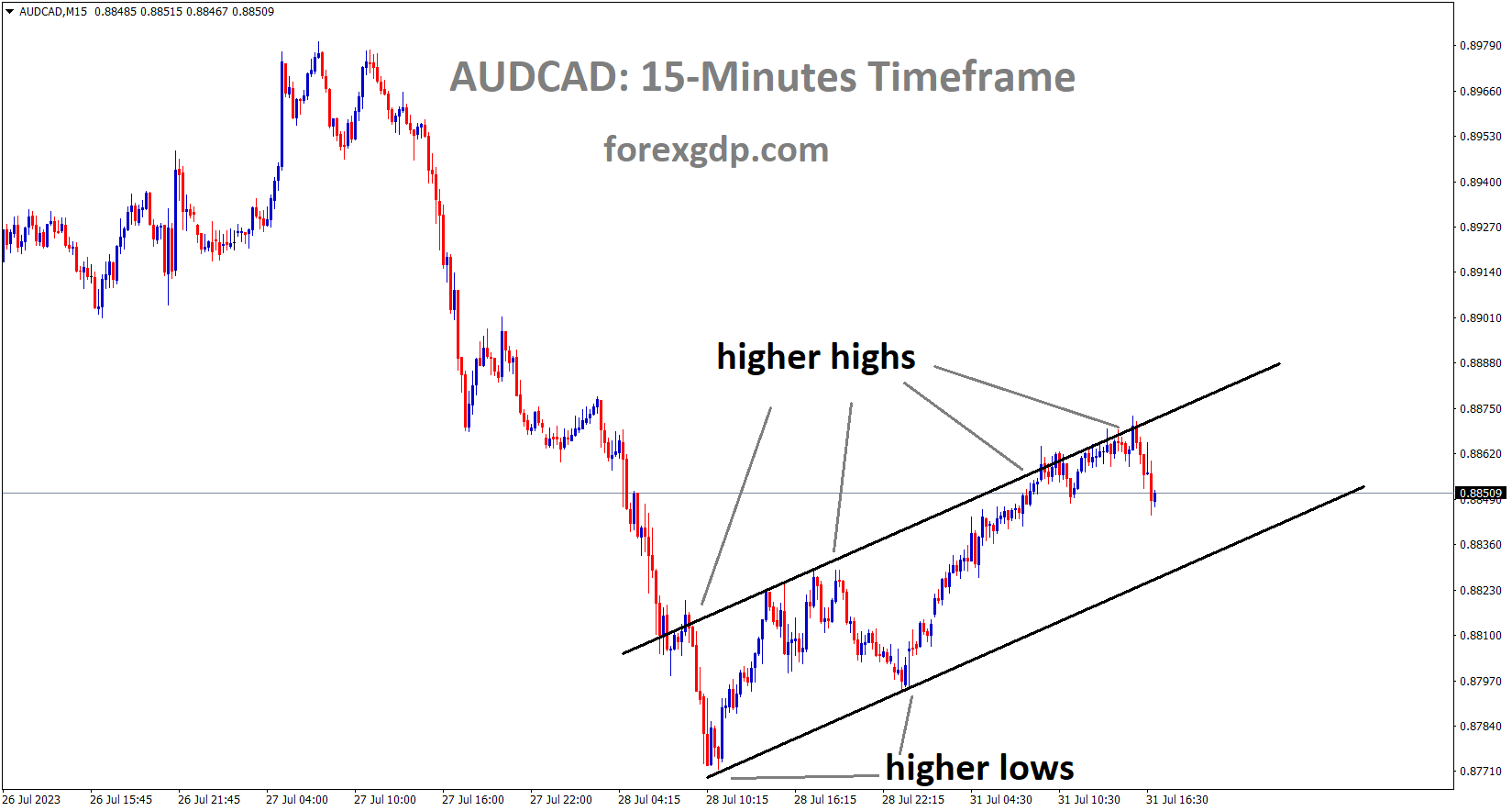EURAUD is moving in the Box pattern and the market has fallen from the resistance area of the pattern
In this meeting, the RBA is less likely to implement a rate hike due to the decrease in consumer spending. However, the higher rates in the housing market are causing concerns for the RBA, further reducing the likelihood of a rate hike in this particular meeting.
The Reserve Bank of Australia (RBA) finds itself at a critical juncture as it navigates a delicate balance between rising inflationary pressures and economic uncertainty. Economists are sharply divided over the appropriate course of action, with some advocating for another interest rate hike, while others argue for a pause. This article will delve into the various factors influencing the RBA’s decision-making process, including retail sales figures, inflationary trends, and the impact of consumer savings buffers. Furthermore, we will analyze how contrasting economic indicators and uncertain outlooks complicate the RBA’s monetary policy decision and explore the implications for financial markets and asset classes.
Economic Experts Divided on RBA’s Future Moves
The RBA’s monetary policy decisions are closely watched by economists and market participants, as they have significant implications for the Australian economy and financial markets. As the central bank contemplates its next move, there is a stark difference of opinion among economic experts.
Retail Sales Figures Impact RBA’s Decision-Making
One of the key indicators influencing the RBA’s decision is retail sales data. Consumer spending plays a crucial role in driving economic growth, and any downturn in retail sales can have a significant impact on the overall economy. The recent decline in retail turnover has raised concerns among economists, leading some to advocate for a pause in rate hikes to assess the health of consumer spending.
Inflation Remains High Despite Previous Rate Increases
The RBA has implemented multiple interest rate hikes since May 2022 in an attempt to curb surging inflation. However, despite these rate increases, inflation continues to run well above the target range of 2-3%.
AUDUSD is moving in the Descending channel and the market has rebounded from the lower low area of the channel
This persistent high inflation poses a challenge for the RBA in deciding whether further rate adjustments are necessary to bring inflation under control.
Economists Predict Another Rate Hike, but Differ on RBA’s Future Path
Amid the inflationary pressures and economic uncertainty, economists have divergent views on the RBA’s future path. Some economists predict that the RBA will raise interest rates by 0.25 percentage points in the upcoming meeting, while others believe that a pause is more prudent.
Westpac and Commonwealth Bank Forecast Rate Increase
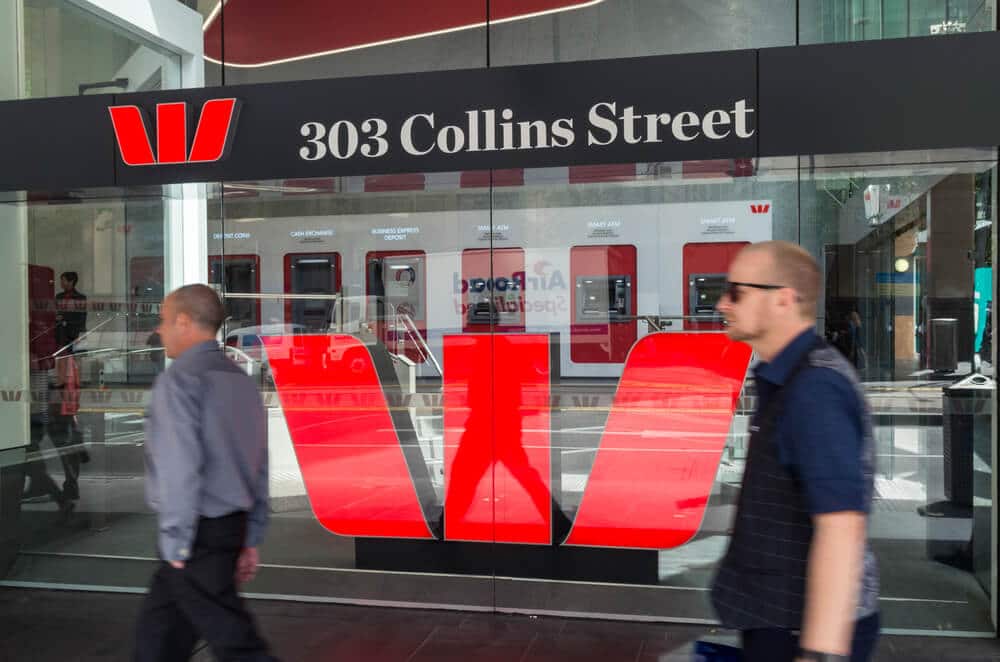
Westpac and Commonwealth Bank are among the financial institutions that expect the RBA to implement another rate hike. Despite weaker retail sales figures, these banks maintain their view that inflation concerns will prompt the RBA to proceed with the rate increase.
Majority of Economists Suggest a Pause After August Hike
On the other hand, a majority of economists surveyed express a view that the RBA may pause after the expected rate hike in August. They believe that the RBA will closely monitor economic indicators and inflation data before making any further policy adjustments.
Financial Markets Show Skepticism on Further Rate Hikes
Despite economists’ views, financial markets remain cautious and show a lower probability of the RBA raising rates in the near future.
GBPAUD is moving in an Ascending channel and the market has fallen from the higher high area of the channel
Traders are hesitant to fully price in another rate hike, reflecting uncertainty and skepticism about the RBA’s policy trajectory.
Consumer Spending Declines, Adding Pressure on RBA’s Decision
Consumer spending is a critical driver of economic activity, and recent data on retail sales indicate a decline in spending amid a cost-of-living squeeze. This adds further pressure on the RBA’s decision-making process regarding interest rate adjustments.
Australian Shoppers Tighten Spending Amid Cost-of-Living Pressure
The weakening of retail turnover in June is attributed to a cost-of-living squeeze on Australian households. The rise in prices of essential goods and services has led consumers to reduce discretionary spending, impacting overall economic growth.
Consumer Savings Buffers May Prolong Monetary Policy Cycle
The RBA faces a unique challenge posed by substantial consumer savings buffers built up during the pandemic. These buffers, worth about 20% of annual household income, have cushioned the economy from the full impact of interest rate increases. The presence of these buffers may result in a prolonged and iterative monetary policy cycle.
Inflation Dynamics and Sticky Services Inflation
Economists analyze the dynamics of inflation and its different components. While core goods inflation has started to decrease, sticky services inflation remains a global concern. In Australia, the tight labor market and rising unit wage costs contribute to persistently high services inflation.
RBA’s Dilemma: Balancing Economic Cross-Currents
The RBA faces a challenging task in balancing divergent economic indicators and uncertainties in the economic outlook. The impact of excess consumer savings buffers further complicates the decision-making process.
Contrasting Economic Indicators Challenge RBA’s Policy Decision
The RBA must contend with a mixture of positive and negative economic indicators, making it challenging to determine the appropriate policy stance.
AUDNZD is moving in the Descending channel and the market has reached the lower high area of the channel
While the jobless rate is near record lows, there are concerns about excess demand, inflationary pressures, and areas of weakness in the economy.
Excess Consumer Savings May Prolong Interest Rate Normalization
The presence of substantial consumer savings buffers has a significant impact on the effectiveness of monetary policy measures. Economists debate how these buffers may prolong the normalization of interest rates and impact aggregate demand.
Interest Rates and Asset Class Attractiveness
Elevated interest rates affect the attractiveness of various asset classes, prompting investors to reassess their investment strategies. The article analyzes how high-grade credit and other asset classes may be affected by rising interest rates.
Retail Sales Slump Raises Questions about RBA’s Next Move

The recent slump in retail sales figures has added to the uncertainty surrounding the RBA’s next move, prompting economists to revise their predictions for an August rate hike.
Uncertain Economic Outlook Influences RBA’s Decision
The article delves into the factors contributing to the uncertain economic outlook and how it impacts the RBA’s decision-making process.
Market Expectations Shift after Soft Inflation Figures
A softening in inflation figures has influenced market expectations regarding the likelihood of an August rate hike.
AUDCAD is moving in an Ascending channel and the market has fallen from the higher high area of the channel
Economists and market participants react to the latest data releases.
Retail Sector’s Disinflation Amid Inflation Concerns
Economists analyze the disinflationary trends within the retail sector and how it aligns with the RBA’s efforts to control overall inflation.
Conclusion: The RBA’s Complex Balancing Act
In conclusion, the RBA faces a complex balancing act as it grapples with divergent economic indicators, stubbornly high inflation, and the impact of consumer savings buffers. The contrasting economic signals and uncertain outlook make it challenging for the RBA to decide on the optimal path for interest rates. While economists are divided on the future course of action, financial markets show caution, reflecting uncertainty in the current economic landscape. The RBA’s monetary policy decision will have significant implications for the Australian economy and financial markets, making it a closely watched event in the coming months.

